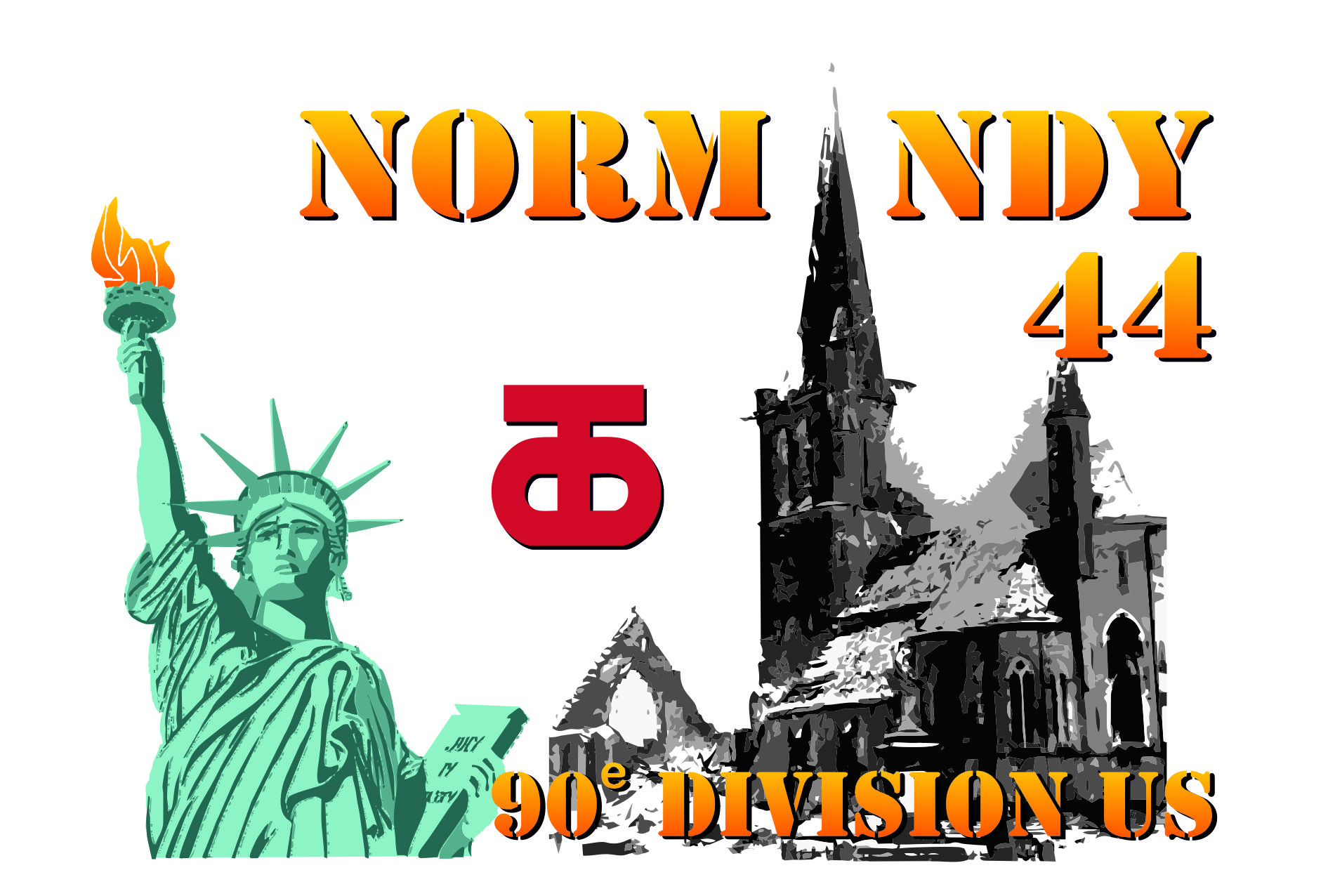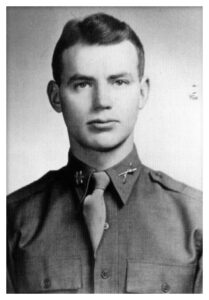
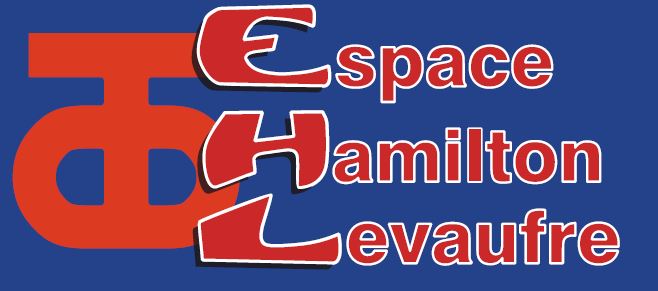
1 Bis Place du Général de Gaulle • 50190 Périers
ehl.normandy@gmail.com

Henri G. Levaufre
Inaugurated on July 27,2019, the Hamilton-Levaufre Space is a place of memory dedicated to these two exceptional men, but also to the 90th US Infantry Division, the bombing of Périers, the exodus, the hard fights at Hill 122 and Sèves Island prior to the liberation of Périers, the reconstruction, the PLUTO pipeline, etc.
Edward S.Hamilton
Landing at Utah-Beach on June 8, 1944, Major Hamilton commanded the 1st Battalion (about 800 men) of the 357th Regiment of the 90th US Infantry Division during the fighting for the liberation of Périers.
Ed was a leader of men. On August 7, a few kilometers from Le Mans, his regiment decimated a unit of German soldiers, making 30 dead, 80 wounded and 280 prisoners. The following September 8th, in Meurthe-et-Moselle, he launched a new raid on the German positions which resulted in the destruction of 4 enemy tanks and the capture of 17 prisoners. This new action earned him the Distinguished Service Cross for his heroic behavior under enemy fire. Promoted Lieutenant-Colonel, he is seriously wounded on September 10th at Hayange, in Moselle.
Henri G. Levaufre
He was 13 years old at the time of the landing in Normandy. His life is forever marked by it, and the summer of 1944 will never stop feeding the daily routine of a life that has become extraordinary. All his life, he never ceased to know and to make known the history of the 90th US Infantry Division, that liberated Périers on July 27, 1944. Appointed as early as 1972 as its official representative in Europe, he is still today an authority in the knowledge of this unit for which, in contact with the inhabitants or veterans of both camps, he has collected an impressive quantity of testimonies on the living conditions and the fights. His greatest pride is, on the occasion of a meeting in Heidelberg in 1979, to have brought a new friendship between yesterday’s enemies, the soldiers of the 90th US Infantry Division and those of the 6th German Parachute Regiment.
The 90th US Infantry Division
The 2 bombardments
The first elements of the 90th Infantry Division (2 battalions of the 359th Infantry Regiment attached to the 4th Infantry Division) landed on Utah-Beach in the morning of June 6, 1944. The rest of the division arrived there two days later. On July 22 and 23, 1944, after having successfully crossed the Sèves River and despite the efforts made to stay there, the men of the 358th Infantry Regiment were forced to surrender or to return to their starting line.
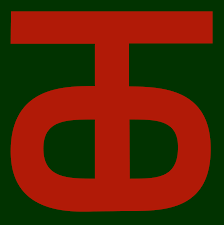
Contrary to the information provided to the bomber crews, Périers does not house German Headquarters, it is only a crossroads of two major axes. In Périers the fear is there of course, but the hope of a close liberation helps to moderate it. We don’t have to fear much here in such a small town… think the inhabitants. On this 8th of June, for the inhabitants of Périers, it is 8:11 am, the hour when their life will change…
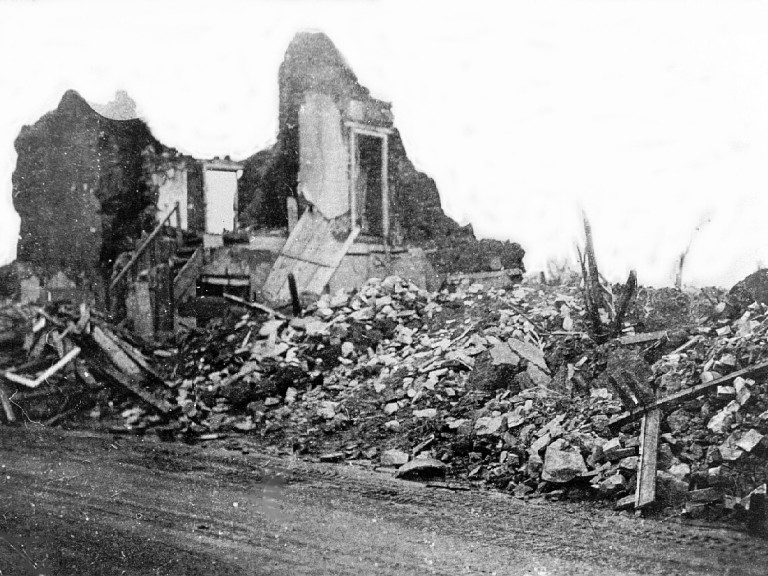
The fighting was so violent that a truce was negotiated so that each side could recover its wounded abandoned on the battlefield. Of the approximately 35,000 men who had spent 308 days in combat, the 90th Infantry Division counted 2,963 killed, 14,009 wounded, 1,052 missing and 442 prisoners.
And for 127 of them, it will stop. The 41 planes dropped 213 bombs of 500 pounds, abo ut 50 tons of explosives. In ruined Périers, the rescue services are organizing themselves as best as they can, looking for survivors, burying the dead and treating the wounded. The survival instinct prevailed. You have to flee, to seek for a safer shelter in the countryside. And on June 13, all hell breaks loose again…
ut 50 tons of explosives. In ruined Périers, the rescue services are organizing themselves as best as they can, looking for survivors, burying the dead and treating the wounded. The survival instinct prevailed. You have to flee, to seek for a safer shelter in the countryside. And on June 13, all hell breaks loose again…
The exodus
Hill 122
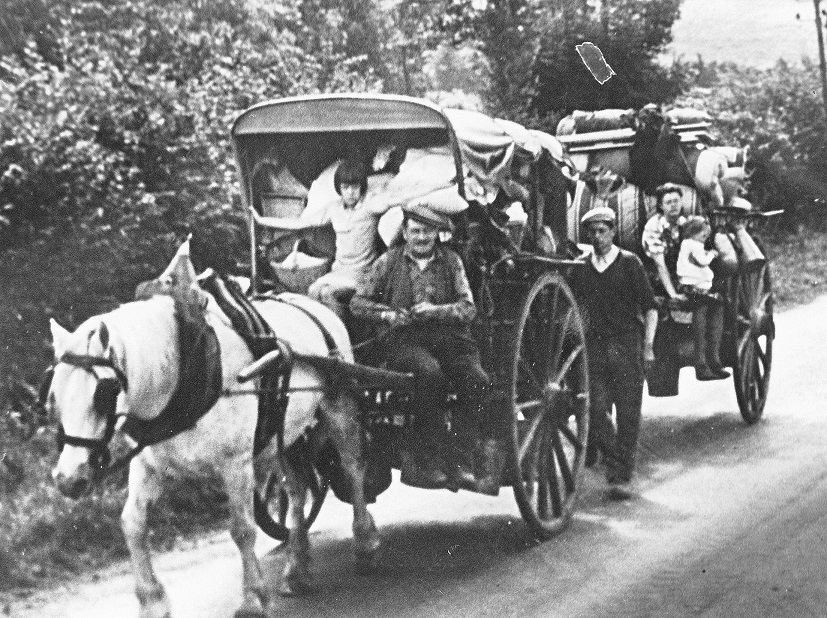
This word speaks to the people of Normandy that Allied bombing forced to leave their towns, their villages to seek  shelter in the countryside. The center of the village of Périers is now in ruins. There are no doctors left to take care of the wounded. Fear is omnipresent. Most of the time the first goal is to try to reach another family home or a friendly farm. Then what seems to be essential for survival is loaded into a cart or a wheelbarrow.
shelter in the countryside. The center of the village of Périers is now in ruins. There are no doctors left to take care of the wounded. Fear is omnipresent. Most of the time the first goal is to try to reach another family home or a friendly farm. Then what seems to be essential for survival is loaded into a cart or a wheelbarrow.
The summit of Mount Castre has an elevation of 122 meters above sea level, hence the name of Cote 122, in English Hill 122. The view enjoyed by German artillery observers from the heights of the mount allows them to precisely and deadly adjust their guns. The Americans started their attack from July 3. The Germans held firm and prevented the Americans from advancing any further: 90% of their losses were due to German artillery. Disorganised, exhausted and permanently soaked for nearly a week, the American soldiers had a particularly low morale. The return of good weather on July 5 made air support possible. The vise will finally be loosened on July 10 at the cost of heavy losses and thanks to the intervention of four Sherman tanks of the 712th Tank Battalion led by Lieutenant Jim Flowers. Mount Castre and the surrounding area were completely liberated on the 12th.
Once on the roads, the danger is not removed, quite the contrary. Up in the sky, the incessant ballet of allied fighters is on the lookout for the slightest movement. A vehicle on a road, even covered with a white sheet, is bound to be suspicious in the eyes of the young trigger-happy pilots.
Hospital lane
Reconstruction
Au soir du 24 juillet, l’objectif c’est la capture de Périers et d’autres villages plus au sud. Le 359ème Régiment doit se positionner quelques km au nord de Périers, en face du chemin de l’Hôpital, chemin de terre à la limite du marais. Encaissé sous de grands arbres entre deux haies épaisses, les Allemands l’ont transformé en ligne de fortification. La première difficulté c’est de réussir à traverser la Sèves, la rivière qui coule au milieu des prés à découvert. Les Allemands disposent de plusieurs chars qui prennent en enfilade les forces américaines. En fin de journée du 26, ne pouvant tenir leurs positions faute de soutien, les hommes doivent se résigner à rejoindre la position qu’ils ont quittée le matin même. Sur un effectif de départ de 450 hommes, ces 15 heures de combat ininterrompu auront coûté 72 tués et 176 blessés. Après nombre d’attaques, le 27 juillet Périers est libéré.
The bombardments on the mornings of June 8 and June 13, 1944 plus the artillery shelling during the days leading up to the liberation of July v, left the center of the to wn of Périers almost 80% destroyed. Although the American engineers cleared the two main roads with bulldozers to ease the crossing of the tanks of the 4th Armored Division, the clearing of houses had to be done mostly by hand with shovels, pickaxes and wheelbarrows.
wn of Périers almost 80% destroyed. Although the American engineers cleared the two main roads with bulldozers to ease the crossing of the tanks of the 4th Armored Division, the clearing of houses had to be done mostly by hand with shovels, pickaxes and wheelbarrows.

